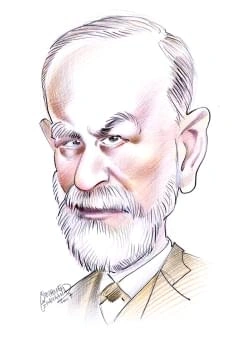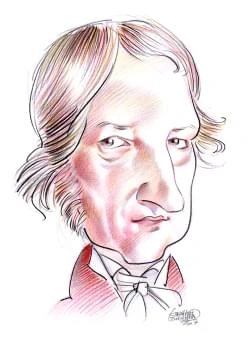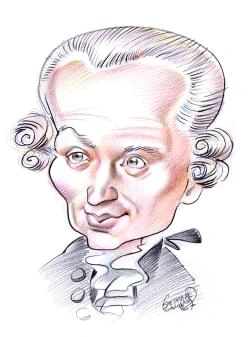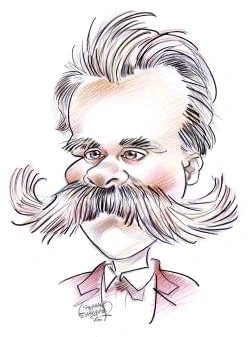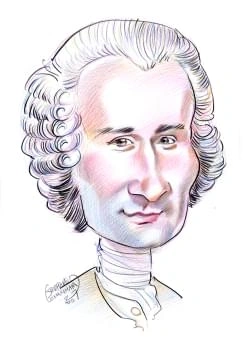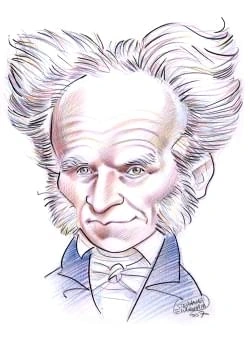541 résultats pour "wats"
-
Vietnam - country.
E Natural Resources Vietnam’s most valuable natural resource is its land, particularly the fertile, alluvial soils in the Red and Mekong deltas. Some 29 percent of the land is currently beingcultivated. Vietnam has some valuable mineral resources, including gold, iron, tin, zinc, phosphate, chromite, apatite, and anthracite coal. Most deposits are located in the northernpart of the country. Few attempts were made to extract these minerals until the French takeover of Vietnam at the end of the 1...
- Thaïlande. Bangkok. Le Wat Phra Keo.
- Thaïlande. Moine au Wat Phra Keo.
-
Ecosystem.
work. The tiny bacteria and fungi feed upon the remains of the salmon. They break down the salmon intochemical nutrients. Nutrients from the salmon go into the soil. The roots of plants along the riverbank take up the nutrients. They use the nutrients to make food. Inthis way, nutrients get recycled back through the ecosystem. WHAT CAN HARM AN ECOSYSTEM? Any change in one living or nonliving part of an ecosystem can cause changes in other parts. Droughts,storms, and fires can change ecosystems....
-
Snorkeling.
injury from animals is to be aware of diving conditions at a site, to dive with a buddy, and to leave the water promptly should a problem occur. Boaters can also pose a serious threat to snorkelers. If not near a boat or a visible dive flag, snorkelers can be virtually invisible to boaters and can be run over.Another common danger in snorkeling is fatigue, which can lead to drowning. V WORKING UNDERWATER Most underwater work is accomplished by scuba divers because they can remain underwater at...
-
Diving (underwater).
compensator (or control) device (BCD or BC), which the diver wears as a vest. By adding air to the BCD, the diver becomes more buoyant and rises. By releasing air,the diver becomes less buoyant and sinks. With minor adjustments of air, the diver can achieve neutral buoyancy. A third hose attaches to pressure gauges that diversuse to monitor how much air remains in the tank. A fourth hose attaches to a backup breathing device called an alternate air source, or octopus. Divers also wear a belt w...
-
Haendel, Georg Friedrich - compositeur de musique.
Compositeur de plus de quarante « opere serie », de vingt-deux oratorios et de deux passions, Haendel maîtrisait dans la musique vocale la souplesse mélodique, l'intensité dramatique dans l'expression des sentiments et l'amplitude des chœurs. Sa musique instrumentale est d'égale qualité. Influencée par l'école italienne, elle donne aux violons des parties fluides et virtuoses et tempère l'amplitude, voire la grandiloquence de certains passages, comme dans Musique pour les feux d'artifice royau...
-
Infrared Space Observatory - astronomy.
know how often these disks occur around stars to help them understand how common it is for planets to form. ISO found several previously unknown stars with disks.ISO also detected olivine, a silicate mineral found in Earth’s own rocky mantle, in the comet Hale-Bopp, which was visible from Earth in 1996 and 1997. The discovery ofolivine in the comet suggests that the comet and Earth have a similar origin. The satellite also detected the first evidence of water outside of the solar system inplanet...
-
-
Meteorology.
to find the corresponding relative humidity and dew-point temperature. III SPECIAL METEOROLOGICAL INSTRUMENTS Meteorologists have developed several sophisticated instruments that measure multiple physical characteristics of the air simultaneously and at more than one location.The most important of these special instruments are radiosondes, Doppler radar, and weather satellites. A Radiosonde A radiosonde measures air temperature, air pressure, and humidity from the earth’s surface up to an alt...
- Thaïlande. Sing Buri, le Wat Phra Nin
-
Fossil Fuels.
water molecules. This crystalline solid is known as gas hydrate. Because technology for the commercial extraction of gas hydrates has not yet been developed, this typeof fossil fuel is not included in most world energy resource estimates. However, in February 2007 the U.S. Department of Energy completed the drilling of a well toretrieve core samples of gas hydrates found in the Prudhoe Bay region of Alaska’s North Slope. By identifying the nature of these gas hydrates, the Energy Departmenthoped...
-
I understood him.
HAPPINESS, HAPPINESS INTERVIEWER. Canyoudescribe theevents ofthat morning? TOMOYASU. Ileft home withmydaughter, Masako.Shewas onher way towork. Iwas going tosee afriend. Anair-raid warning wasissued. Itold Masako Iwas going home. Shesaid, "I'mgoing tothe office." Idid chores andwaited forthe warning tobe lifted. I folded thebedding. Irearranged thecloset. Icleaned thewindows withawet rag. There wasaflash. Myfirst thought was that itwas theflash from acamera. Thatsounds soridiculous now.Itpierc...
-
Hurricane.
V HOW HURRICANES ARE DETECTED AND MONITORED Since 1943 U.S. military and civilian aircraft have been flying into hurricanes to measure wind velocities and directions, the location and size of the eye, air pressures,and temperatures in different parts of the storm. A coordinated system of tracking hurricanes was developed in the mid-1950s, and steady improvements have beenmade over the years. In addition to reports from aircraft, geosynchronous weather satellites (since 1966) and ocean buoys tha...
-
Forensic Science.
barbiturates, cocaine, amphetamines, and heroin. When a body is discovered in a lake, stream, river, or ocean and the lungs are found to be filled with water, the medical examiner must determine if the drowningoccurred where the body was found or elsewhere. A standard microscope that can magnify objects to 1500 times their actual size is used to look for the presence orabsence of diatoms, single-celled algae that are found in all natural bodies of water. The absence of diatoms raises the possi...
-
Global Warming.
some of the warming influence of increasing greenhouse gases. A1 Carbon Dioxide Carbon dioxide is the second most abundant greenhouse gas, after water vapor. Carbon dioxide constantly circulates in the environment through a variety of naturalprocesses known as the carbon cycle. It is released into the atmosphere from natural processes such as eruptions of volcanoes; the respiration of animals, whichbreathe in oxygen and exhale carbon dioxide; and the burning or decay of plants and other organic...
-
Lesotho - country.
V GOVERNMENT Under the terms of the constitution of 1965, which was suspended in 1970, Lesotho was a constitutional monarchy with a bicameral legislature. After a coup in 1986,legislative and executive powers were vested in the king but actually exercised by a 6-member military council and a 20-member council of ministers. In 1993 Lesothoadopted a new constitution that redefined the role of the monarchy and altered the legislative branch of the government. The king, who is head of state, has no...
-
-
World Energy Supply.
In the 1990s, oil production by non-OPEC countries remained strong and production by OPEC countries rebounded. The result at the end of the 20th century was aworld oil surplus and prices (when adjusted for inflation) that were lower than in 1972. Experts are uncertain about future oil supplies and prices. Low prices have spurred greater oil consumption, and experts question how long world petroleum reservescan keep pace with increased demand. Many of the world’s leading petroleum geologists beli...
-
Antarctica - Geography.
The maximum area of sea ice surrounding Antarctica each winter varies from year to year. A marked decline during the 1970s appears to have reversed in more recentdecades, except in the Antarctic Peninsula area. This area has lost almost 40 percent of its sea ice since the start of the 1980s. Sea ice is important to marine life. Krillfeed on algae that live under the sea ice and are released when the ice melts in spring and summer. In turn, many marine animals feed on krill. Emperor penguinsbreed...
-
Carbon - chemistry.
Graphite is black and slippery and conducts electricity. In graphite, the atoms form planar, or flat, layers. Each layer is made up of rings containing six carbon atoms.The rings are linked to each other in a structure that resembles the hexagonal mesh of chicken wire. Each atom has three sigma bonds (with 120° between any two ofthe bonds) and belongs to three neighboring rings. The fourth electron of each atom becomes part of an extensive pi bond system. Graphite conducts electricity,because th...
-
Kansas - geography.
at the adjoining cities of Kansas City, Kansas, and Kansas City, Missouri. Its chief headstreams are the Republican and Smoky Hill rivers, which join to form the KansasRiver at Junction City. Each of the headstreams has numerous tributaries. The Kansas River proper is only 270 km (170 mi) long, but the Smoky Hill River has a lengthof 870 km (540 mi), and the Republican River has a length of 720 km (450 mi). The main tributary flowing into the Kansas River is the Big Blue River. The Arkansas Rive...
-
Kansas - USA History.
at the adjoining cities of Kansas City, Kansas, and Kansas City, Missouri. Its chief headstreams are the Republican and Smoky Hill rivers, which join to form the KansasRiver at Junction City. Each of the headstreams has numerous tributaries. The Kansas River proper is only 270 km (170 mi) long, but the Smoky Hill River has a lengthof 870 km (540 mi), and the Republican River has a length of 720 km (450 mi). The main tributary flowing into the Kansas River is the Big Blue River. The Arkansas Rive...
-
Thailand - country.
E Natural Resources Thailand possesses a range of mineral resources. Tin is mined in the peninsula. Important gemstones, such as sapphires, are found in the southeast, and coal reserves,particularly lignite, are in the north. Fish are abundant in rivers and coastal waters. In addition to being consumed domestically, fish are also exported. F Climate Thailand experiences a typical monsoon climate. Winds blow from the northeast during the winter months of October to March or April (known as the...
-
Manitoba - Geography.
E Plant Life Forests cover 66 percent of Manitoba. The main forest area is divided into the boreal forest and the mixed-wood forest. The boreal, or northern, forest containsconiferous (cone-bearing) trees, especially white and black spruce, balsam fir, and jack pine. South of the boreal forest is the mixed-wood forest, which contains conifers as well as such deciduous trees as white birch, aspen, poplar, and Manitoba maple. Prairie land is found in the southwest, where the natural vegetation i...
-
Manitoba - Canadian History.
E Plant Life Forests cover 66 percent of Manitoba. The main forest area is divided into the boreal forest and the mixed-wood forest. The boreal, or northern, forest containsconiferous (cone-bearing) trees, especially white and black spruce, balsam fir, and jack pine. South of the boreal forest is the mixed-wood forest, which contains conifers as well as such deciduous trees as white birch, aspen, poplar, and Manitoba maple. Prairie land is found in the southwest, where the natural vegetation i...
-
-
Wyoming (state) - geography.
The basins, which lie in the rain shadow of mountains, are very dry, with an average annual precipitation of about 250 mm (about 10 in) or less; the Great Plains regionhas an annual average of about 380 mm (about 15 in), and the Black Hills region receives slightly more. Thunderstorms and hailstorms are relatively frequent insummer. The annual snowfall ranges from about 500 mm (about 20 in) in the Bighorn Basin to well over 5,100 mm (over 200 in) in the higher mountains, where annualprecipitatio...
-
Wyoming (state) - USA History.
The basins, which lie in the rain shadow of mountains, are very dry, with an average annual precipitation of about 250 mm (about 10 in) or less; the Great Plains regionhas an annual average of about 380 mm (about 15 in), and the Black Hills region receives slightly more. Thunderstorms and hailstorms are relatively frequent insummer. The annual snowfall ranges from about 500 mm (about 20 in) in the Bighorn Basin to well over 5,100 mm (over 200 in) in the higher mountains, where annualprecipitatio...
-
Sweden - country.
mi) and is Sweden’s second largest lake, after Vänern. The two lakes, together with several smaller lakes, rivers, and canals, form an internal water route called theGöta Canal. Built in the early 19th century, the Göta Canal extends for about 386 km (about 240 mi) and provides a scenic transportation link between the Baltic Sea,at Stockholm, and the Kattegat. Sweden’s other large lakes in the district include Mälaren, Hjälmaren, and the famously picturesque Siljan. D Climate Although one-seven...
-
Illinois - geography.
the state before joining the Mississippi River at Grafton. The Illinois has been deepened and straightened and forms part of the Illinois Waterway. The watershed between rivers that flow into the Mississippi river system and rivers that flow into the Great Lakes is low and in many places is not easily discernible. Inwhat is now the Chicago area, explorers had little difficulty portaging, or carrying, their canoes over the low watershed between the Des Plaines River, which flows intothe Illinois,...
-
Illinois - USA History.
the state before joining the Mississippi River at Grafton. The Illinois has been deepened and straightened and forms part of the Illinois Waterway. The watershed between rivers that flow into the Mississippi river system and rivers that flow into the Great Lakes is low and in many places is not easily discernible. Inwhat is now the Chicago area, explorers had little difficulty portaging, or carrying, their canoes over the low watershed between the Des Plaines River, which flows intothe Illinois,...
-
Alabama (state) - geography.
indentations along the coast are measured, the state’s shoreline is 977 km (607 mi) long. It includes the shores of Mobile Bay, an inlet 56 km (35 mi) long at the mouthof the Mobile River. Barrier beaches partly block the entrance to the bay, leaving narrow openings on either side of Dauphin Island. Dauphin and other islands alongAlabama’s coast west of Mobile Bay are separated from the mainland by Mississippi Sound. D Climate Alabama has a humid subtropical climate, with short, relatively mild...
-
Alabama (state) - USA History.
indentations along the coast are measured, the state’s shoreline is 977 km (607 mi) long. It includes the shores of Mobile Bay, an inlet 56 km (35 mi) long at the mouthof the Mobile River. Barrier beaches partly block the entrance to the bay, leaving narrow openings on either side of Dauphin Island. Dauphin and other islands alongAlabama’s coast west of Mobile Bay are separated from the mainland by Mississippi Sound. D Climate Alabama has a humid subtropical climate, with short, relatively mild...
-
Minnesota - geography.
C Climate Minnesota’s climate is classified as humid continental because normally there is a sufficient amount of precipitation to provide at least some surplus for runoff, andbecause Minnesota’s temperature conditions are largely controlled by its location in the interior of the large landmass of North America. The result is extreme seasonaltemperature variations. The average January temperature is about -18°C (about 0°F) in the northwest and about -10°C (about 14°F) in the south, but thetherm...
-
-
Minnesota - USA History.
C Climate Minnesota’s climate is classified as humid continental because normally there is a sufficient amount of precipitation to provide at least some surplus for runoff, andbecause Minnesota’s temperature conditions are largely controlled by its location in the interior of the large landmass of North America. The result is extreme seasonaltemperature variations. The average January temperature is about -18°C (about 0°F) in the northwest and about -10°C (about 14°F) in the south, but thetherm...
-
Pennsylvania - geography.
B Rivers and Lakes There are three major river basins in Pennsylvania: the Susquehanna, the Ohio, and the Delaware. Together they drain more than 90 percent of Pennsylvania’s landarea. Most of eastern and central Pennsylvania is drained by the Susquehanna and Delaware systems. The western part of the state is drained by the Allegheny andMonongahela rivers, which join at Pittsburgh to form the Ohio. In addition to the three major river basins, short streams flowing into Lake Erie drain the north...
-
Pennsylvania - USA History.
B Rivers and Lakes There are three major river basins in Pennsylvania: the Susquehanna, the Ohio, and the Delaware. Together they drain more than 90 percent of Pennsylvania’s landarea. Most of eastern and central Pennsylvania is drained by the Susquehanna and Delaware systems. The western part of the state is drained by the Allegheny andMonongahela rivers, which join at Pittsburgh to form the Ohio. In addition to the three major river basins, short streams flowing into Lake Erie drain the north...
-
Japan - country.
island’s fertile soils support agriculture and provide the vast majority of Japan’s pasturelands. In addition, Hokkaidō contains coal deposits, and the cold currents off itsshores supply cold-water fish. Winters are long and harsh, so most of Hokkaid ō is lightly settled, housing about 5 percent of Japan’s population on approximately 20 percent of its land area. However,its snowy winters and unspoiled natural beauty attract many skiers and tourists. Hokkaid ō is thought of as Japan’s northern fr...
-
Georgia (state) - geography.
B Rivers and Lakes Most of the rivers of Georgia drain eastward to the Atlantic Ocean proper or southward to the Gulf of Mexico. Only a few flow northward to the Tennessee River, which isa major tributary of the Mississippi River. Most of the rivers flowing to the coasts are navigable by barges and small craft as far upstream as the Fall Line. The major river flowing to the Atlantic is the Savannah River, which, with the Tugaloo River, one of its headwaters, forms most of the state’s eastern bo...
-
Georgia (state) - USA History.
B Rivers and Lakes Most of the rivers of Georgia drain eastward to the Atlantic Ocean proper or southward to the Gulf of Mexico. Only a few flow northward to the Tennessee River, which isa major tributary of the Mississippi River. Most of the rivers flowing to the coasts are navigable by barges and small craft as far upstream as the Fall Line. The major river flowing to the Atlantic is the Savannah River, which, with the Tugaloo River, one of its headwaters, forms most of the state’s eastern bo...
-
First Aid.
IV SEVERE BLEEDING The presence of blood over a considerable area of a person’s body does not always indicate severe bleeding. The blood may ooze from multiple small wounds or besmeared, giving the appearance of more blood than is actually present. The rate at which blood is lost from a wound depends on the size and kind of blood vesselruptured. Bright red, spurting blood indicates injury to an artery while welling or steadily flowing, dark red blood indicates injury to a vein. Welling or spur...
-
Connecticut - geography.
The state’s shoreline, when all the bays and inlets are taken into account, has a total length of 995 km (618 mi). The coastline is deeply indented by long estuaries androcky inlets, and there are many sandy beaches and stretches of tidal marsh. There are several good harbors along the coast, the most important of which is at NewHaven. A few small islands lie offshore in Long Island Sound. D Climate Connecticut has long, hot summers and cold winters. The climate does not vary greatly from place...
-
-
Connecticut - USA History.
The state’s shoreline, when all the bays and inlets are taken into account, has a total length of 995 km (618 mi). The coastline is deeply indented by long estuaries androcky inlets, and there are many sandy beaches and stretches of tidal marsh. There are several good harbors along the coast, the most important of which is at NewHaven. A few small islands lie offshore in Long Island Sound. D Climate Connecticut has long, hot summers and cold winters. The climate does not vary greatly from place...
-
Rhode Island - geography.
C (73° F). Along the northern state line, the January mean temperature is about 1° C (about 2° F) colder than in Warwick in January. Along the ocean coast, theJanuary mean temperature is -1° C (30° F). Warm season temperatures are also influenced by the ocean and bay, so temperatures are usually cooler along the coastthan in the interior. The difference tends to be greatest in spring and early summer. Winter temperatures in Rhode Island are usually above -7° C (20° F), buttemperatures colder by...
-
Rhode Island - USA History.
C (73° F). Along the northern state line, the January mean temperature is about 1° C (about 2° F) colder than in Warwick in January. Along the ocean coast, theJanuary mean temperature is -1° C (30° F). Warm season temperatures are also influenced by the ocean and bay, so temperatures are usually cooler along the coastthan in the interior. The difference tends to be greatest in spring and early summer. Winter temperatures in Rhode Island are usually above -7° C (20° F), buttemperatures colder by...
-
Evolution - biology.
genetic diversity to extinction. Sexual reproduction ensures that the genes in a population are rearranged in each generation, a process termed recombination. Although the combinations of genes inindividuals change with each new generation, the gene frequency, or ratio of different alleles in the entire population, remains relatively constant if no evolutionaryforces act on the population. One such force is the introduction of new genes into the genetic material of the population, or gene pool...
-
Ohio - geography.
conflict with modified Gulf air and causing frontal or cyclonic storms. Gulf air is dominant in summer. In fall, polar air passing over Lake Erie is modified, delaying thekilling frost along the adjacent shoreline. C1 Temperatures The mean annual temperatures for the state range from 9° C (48° F) in the northeast to 13° C (55° F) in the south. Average January temperatures range from -4° C(24° F) in the west to 2° C (35° F) in the south. July averages are 24° C (76° F) in the south and 23° C (73...
-
Ohio - USA History.
conflict with modified Gulf air and causing frontal or cyclonic storms. Gulf air is dominant in summer. In fall, polar air passing over Lake Erie is modified, delaying thekilling frost along the adjacent shoreline. C1 Temperatures The mean annual temperatures for the state range from 9° C (48° F) in the northeast to 13° C (55° F) in the south. Average January temperatures range from -4° C(24° F) in the west to 2° C (35° F) in the south. July averages are 24° C (76° F) in the south and 23° C (73...
-
Valley.
Except in mountainous terrain, rivers are almost always flanked by floodplains. Floodplains are flat wide deposits of alluvium, river-deposited sediment, on either side of the river channel. During floods, a river overflows its banks and spreads out the sediment near the river to form a floodplain. Floodplains of large rivers, such as thoseof the Mississippi River, can be flat areas tens of kilometers across. River channels migrate back and forth across their floodplains as alluvium is repeate...
-
Valley - Geography.
Except in mountainous terrain, rivers are almost always flanked by floodplains. Floodplains are flat wide deposits of alluvium, river-deposited sediment, on either side of the river channel. During floods, a river overflows its banks and spreads out the sediment near the river to form a floodplain. Floodplains of large rivers, such as thoseof the Mississippi River, can be flat areas tens of kilometers across. River channels migrate back and forth across their floodplains as alluvium is repeate...
-
-
Titan (astronomy) - astronomy.
The terrain is rugged and shows evidence of erosion from methane rain and from liquid seeping from underground. The rocklike ice chunks on the surface,photographed by Huygens, have a rounded shape that could result from their tumbling in flash floods. Scientists have also identified possible cold volcanoes that mayspew a mix of ammonia and water ice. Titan is Saturn’s densest moon. Planetary scientists theorize that Titan has a rocky core about 3,400 km (about 2,100 mi) in diameter, surrounded b...
-
Ear.
I
INTRODUCTION
Ear, organ of hearing and balance. Only vertebrates, or animals
line or rotates in any direction. Each canal also contains sensory areas with sensory hair cells that project into a cone-shaped cap of gelatin. Two of the semicircularcanals are in a vertical position and are used to detect vertical movement, such as jumping or falling. The third canal is horizontal and detects horizontal movement,such as turning or spinning. The action of the canals depends on the inertia of the fluid inside. When the motion of the body changes, the fluid lags behind, causing...
}})
